Kongnamul Bap is a classic one pot Korean rice that’s cooked with soybean sprouts then mixed with yummy seasoned soy sauce. It is simple to make and is also delicious.
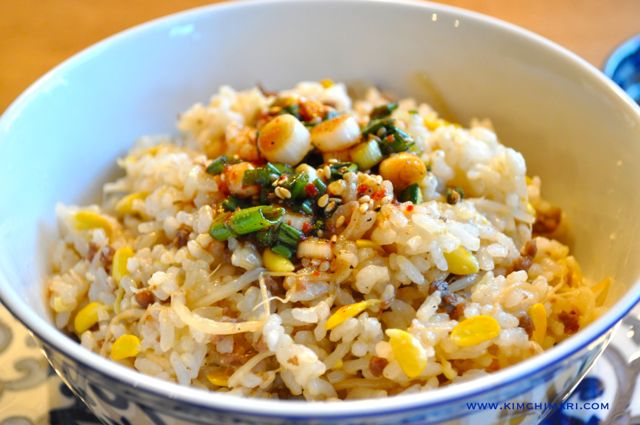
If you have ever been to a Korean restaurant, you probably had a side dish made from these soybean sprouts (콩나물 Kongnamul). They are also great in soups and stews and Koreans swear that Kongnamul Guk(soup) will cure the common cold. Nutritionally, soybean sprouts contain tons of vitamin C and are also a good source of vitamin Bs, thiamine and folate. The head (the bean part) contains a lot of protein and the root part provides fiber.
Another way to eat these healthy and tasty sprouts is in a complete meal with rice (Kongnamul Bap). This is one of those dishes that was part of almost every Korean home when I was growing up. And I have to say.. as a kid, for me, it wasn’t as exciting to me as kalbi or pork belly. Maybe I just took it for granted since we had it quite often..But, after I started living in the US, it became one of those dishes that I really started to miss. I guess you can say it is my Korean comfort food.
There were some concerns a few years ago in Korea about soybean sprouts that were grown using pesticides and other chemicals. The ones you buy in the US are probably fine but just in case, be suspicious if the white part below the bean is very chunky and looks especially long – like as if it was on steroids compared to other brands. If you can, buy ones that are organic or grown naturally which usually look thinner and smaller.
Prep time: 15 min. Cooking time: 40 min. Servings: 4
Ingredients for Kongnamul Bap
- 3 cups* short grain rice *The cup here is a measuring cup that comes with rice cookers which is meant only to work with the water level measurements given inside the rice cooker. Note that 1 rice measuring cup is actually equivalent to 3/4 C in standard volume measurements.
- 3 cups* of water
- 14 oz soybean sprouts
- 1 tsp salt
- 1/3 lb seasoned, cooked ground beef (or thinly sliced beef strips)
- seasoning for beef –
- 2 tsp soy sauce (Kikkoman)
- 1 tsp sugar
- 2 tsp rice cooking wine
- 1 tsp sesame oil
- 1 tsp minced garlic
- 1/8 tsp garlic powder (optional)
- 1/8 tsp ground black pepper
- sauce for rice (양념장 yangnyum jang)
- 3 T soy sauce
- 2 T chopped green onions
- 2 tsp ~ 1 T red chili powder (to taste)
- 1 tsp chopped garlic
- 2 tsp sugar
- dash of black pepper
- 1 T sesame oil
- 1 T sesame seeds
- 1 tsp chopped fresh green chili (optional)
Step by Step Instructions for Rice with Soybean Sprouts
1. Prepare the ground beef by mixing in all the seasonings and then stir frying the beef on medium heat until fully cooked.
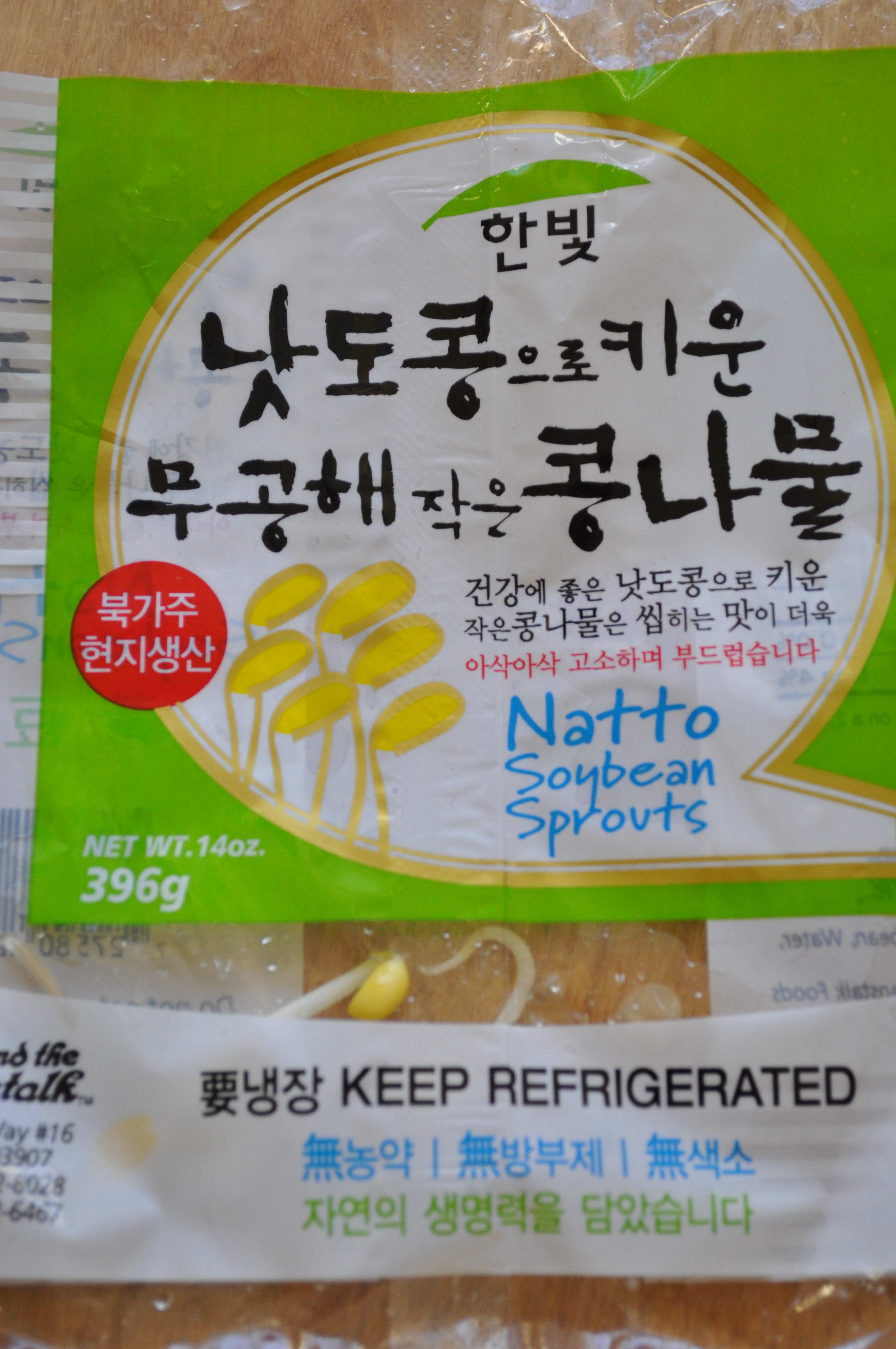
2. Wash and clean the soybean sprouts. It is customary to clean the sprouts by trimming the root ends of each sprout individually but I usually skip this step because it takes time and since it really doesn’t affect the taste at all. Just pick out any sprouts that are mushy or brownish looking and where the heads have turned black or have black spots on them. A bag of good quality fresh bean sprouts should have very few sprouts that need to be picked out.
3. Wash the rice and add rice to rice cooker. Mix the water and salt and pour over the rice.
4. Spread the cleaned sprouts and the cooked ground beef on top of the rice.
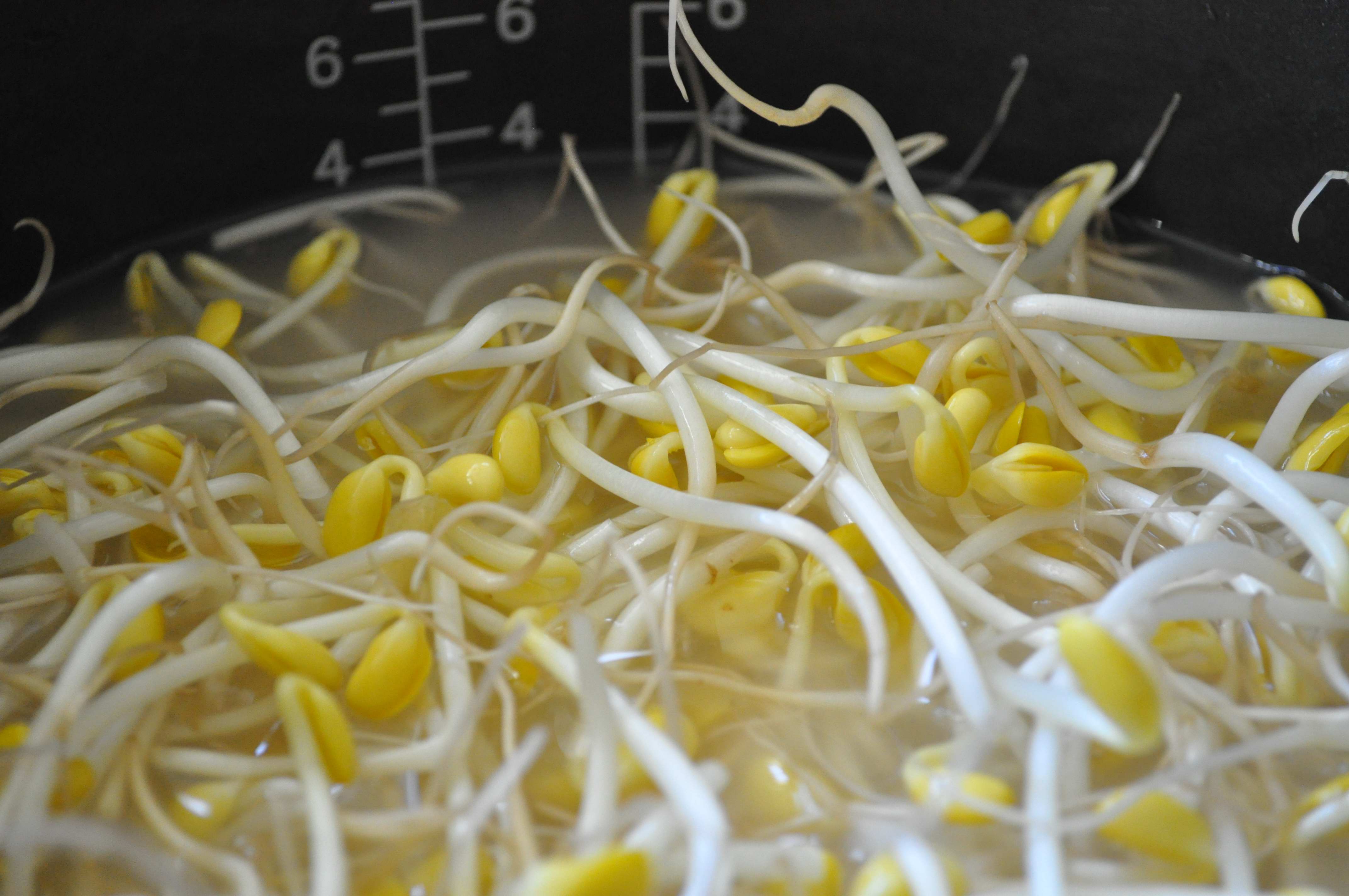
5. RICE COOKER – choose the regular rice cooking function and cook your rice.
STOVE TOP – it’s usually better to put the sprouts and beef first into the pot and THEN ADD rice on top. (Read my variations below). Don’t open the lid until the bean sprouts are fully cooked (or rice is fully cooked) otherwise the sprouts can come out smelly and tasting fishy.
When you cook rice in a pot on STOVE TOP, you bring it to a boil and then lower the heat to low and let it simmer for 15 minutes until all the liquid is gone (the sound will change from a bubbling sound to a low hissing sound) while keeping the lid on. Turn off the heat and let it sit for another 2 minutes or so before you open the lid.
5. While the rice is cooking you can make the yangnyum jang. Remember that this sauce is quite strong and salty, so little goes a long way. An option is to dilute it by adding water (1 T water).

5. When it is all cooked, mix the rice gently to evenly distribute the beef and sprouts throughout the rice. Now serve the rice with the sauce on the side so that people can adjust the amount to their taste. My husband always ends up adding too much sauce and makes his rice too salty! Please start by adding about 1- 2 tsp to a bowl of rice and add more if you need it. Enjoy it with some kimchi on the side!
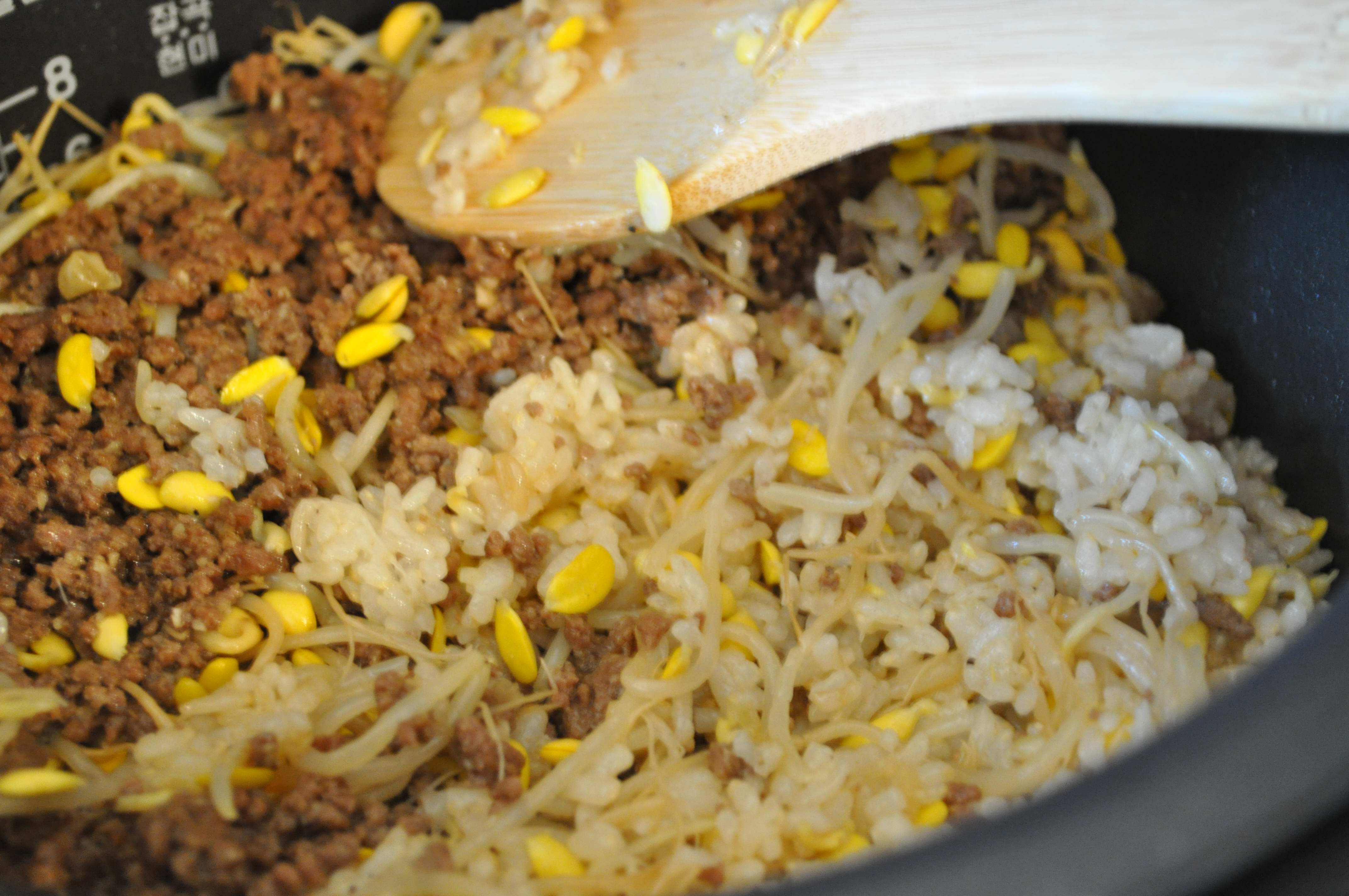
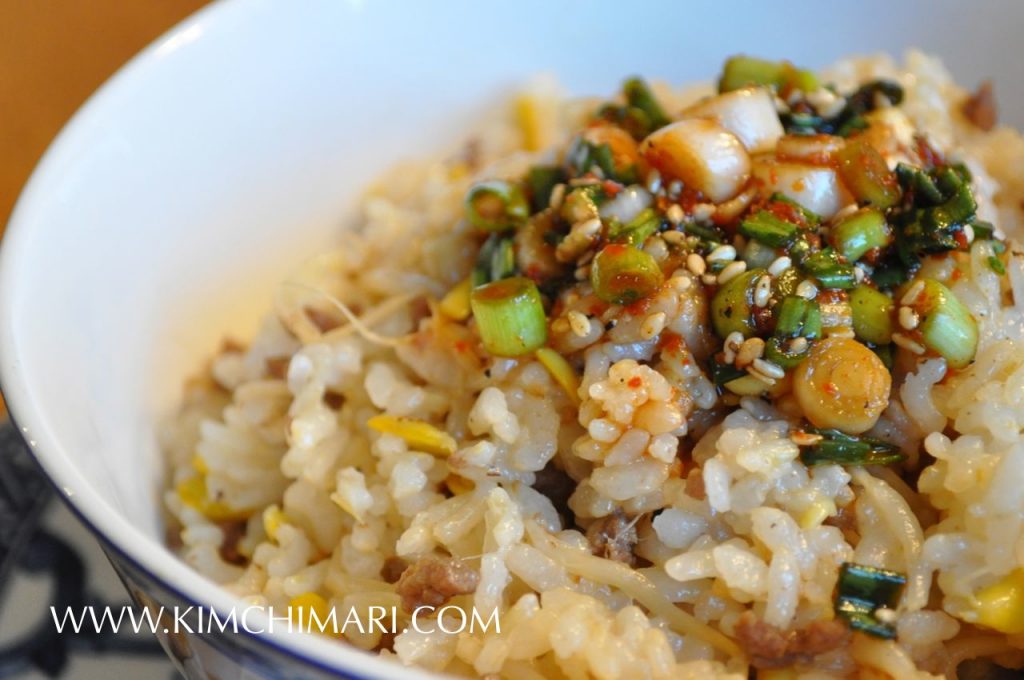
kongnamul Bap recipe Variations
- COOKING soybean sprouts and rice SEPARATELY (Great for making it low carb)
- If you find the rice a little too mushy, you can cook the soybean sprouts separately in a pot with about 2/3 cup water + bag of sprouts + a little salt for about 6 minutes on medium heat. It should cook the sprouts but still have a little soft crunch. Drain the sprouts.
- Cook the rice separately as usual but maybe a tiny bit less water.
- Make the sauce then assemble your bowl with rice then the sprouts on top. To make it low carb, make brown rice and add lot more soybean sprouts than rice.
- Traditionally, kongnamul bap was made in a huge iron pot over a wood burning stove. And the sprouts were spread at the bottom of the pot first before the rice was added. There were two reasons for this: one is that there is no chance of the sprouts getting a fishy smell this way since it was buried under the rice; two is that the sprouts will lose less moisture. However, in recent times with the use of the electric rice cooker, the moisture and the taste gets pretty much sealed as it cooks. And the sprouts tend to get a little burnt at the bottom which some people don’t like. But for me, I like having the sprouts on top because it leaves them more crunchy.
- Add shitake or oyster mushrooms and julienned carrots. I don’t think it can hurt but it’s definitely not a traditional recipe. I personally don’t like adding random ingredients to recipes just for color or texture so please try this authentic recipe first before you go and add other stuff.
- You can use ground pork instead of beef or mix half and half.
Rice with Korean Soybean Sprouts (Kongnamul Bap)
Ingredients
- 3 cups short grain rice (*Note this is 1 rice cooker cup – equivalent to 3/4 C in standard volume measurements.)
- 3 cups water
- 14 oz soybean sprouts
- 1 tsp salt
- 1/3 lb seasoned , cooked ground beef (or thinly sliced beef strips)
seasoning for beef
- 2 tsp soy sauce (Kikkoman)
- 1 tsp sugar
- 2 tsp rice cooking wine
- 1 tsp sesame oil
- 1 tsp minced garlic
- 1/8 tsp garlic powder (optional)
- 1/8 tsp ground black pepper
sauce for rice (양념장 yangnyum jang)
- 3 Tbsp soy sauce
- 2 Tbsp chopped green onions
- 2 – 3 tsp red chili powder (to taste)
- 1 tsp chopped garlic
- 2 tsp sugar
- dash of black pepper
- 1 Tbsp sesame oil
- 1 Tbsp sesame seeds
- 1 tsp green chili , chopped (optional)
Instructions
- Prepare the ground beef by mixing in all the seasonings and then stir frying the beef on medium heat until fully cooked.
- Wash and clean the soybean sprouts and drain.
- Wash rice and drain.
- Add rice to pot, mix water and salt and pour over the rice. Spread the cleaned sprouts and the cooked ground beef on top of the rice.
- If using rice cooker, put the pot in the rice cooker, close lid of the rice cooker and start it. Select the White Rice function and let the rice cook.
- If cooking rice on stove top, it is best to put the sprouts and the beef FIRST into the pot and then add rice on top (Read Kongnamul Bap Recipe variations above. Don’t open the lid until the bean sprouts are fully cooked (or rice is fully cooked) otherwise the sprouts can come out smelly and tasting fishy. When you cook rice in a pot, you bring it to a boil and then lower the heat to low and let it simmer for 15 minutes until all the liquid is gone (the sound will change from a bubbling sound to a low hissing sound) while keeping the lid on. Turn off the heat and let it sit for another 2 minutes or so before you open the lid.
- Make yangnyeomjang (sauce) by mixing all ingredients. Dilute with 1 Tbs water for less salty taste.
- When it is all cooked, mix the rice gently to evenly distribute the beef and sprouts throughout the rice.
- Serve with sauce on the side.
Tips & Notes:
You can use ground pork instead of beef or mix half and half. Yangnyeomjang sauce is not included in nutrition facts caculation.
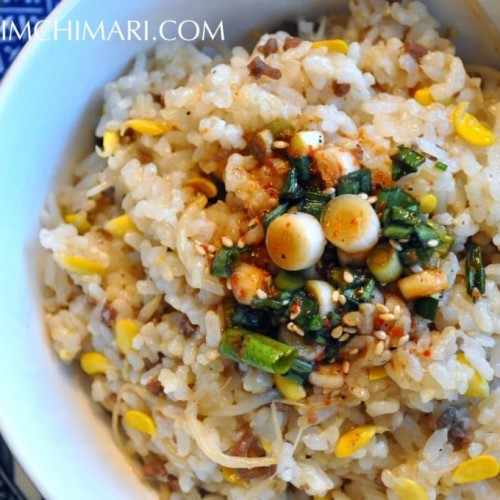
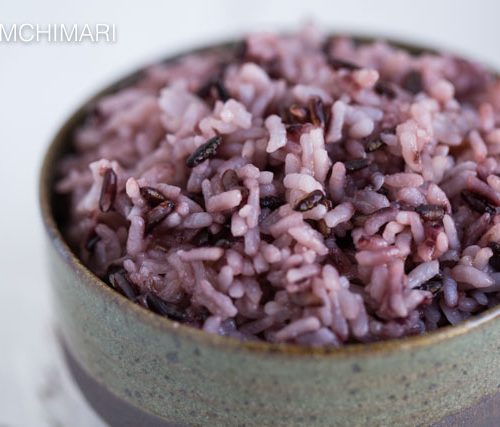
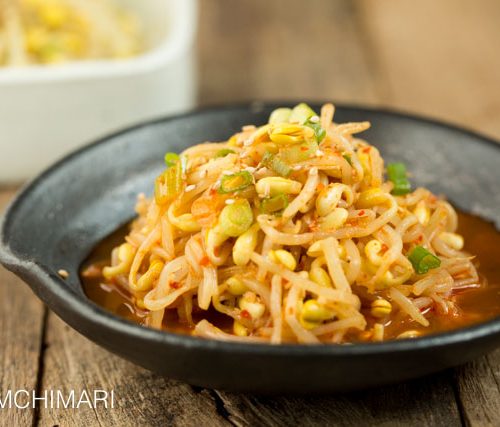

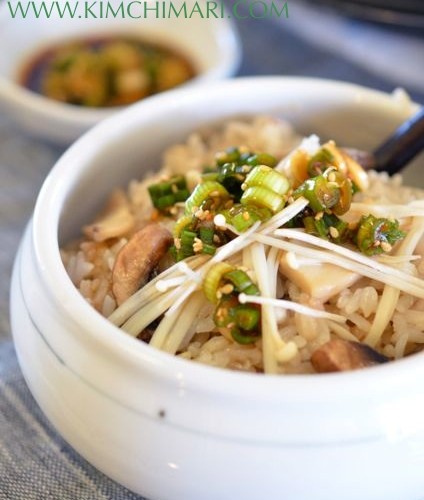
















This one pot dish recipe is easy to prepare for busy week days. I used ground turkey instead of ground beef. It turned out very tasty.
The hardest part was cleaning& trimming feet off kongnamul. Next time, I will look for organic sprouts & skip this trimming process.
Hi Michelle, I know – cleaning the soybean sprouts is also not my favorite thing to do. You can totally skip the trimming process – just need to be ok with a little bit of a stringy texture. Glad you liked it! Thank you!
This was fantastic! The salty/spicy jang overtop just made this irresistible. I added a fried egg for my daughter.
Wonderful!! Soo happy to hear that you enjoyed it. And the fried egg on top is great choice!
Hi, would I be able to cook this in the instant pot (pressure cooker)? Thanks
Well, you can try the regular rice cook function in the pressure cooker. Hope that helps!
I can’t wait to cook this. Can regular bean sprouts be used in this recipe?
If you are talking about mung bean sprouts? Well, it just won’t be the same but you can try..
Yes, mung beans. Thanks for your reply.
I love the recipe. I’ve been making it for a few years. It really suits my taste. However, I thought I’d point something out that I hadn’t noticed before. My dad tried making it for me the other day but kind of messed up because I printed the instructions for him. There’s no indication between steps 4 and 5 in the printable instructions that the rice should start cooking at that point. In the step by step instructions on the site, it also never explicitly says to cook the rice, but it does say to prepare the sauce for the rice while the rice is cooking (for step 5) after a section that describes how to cook the rice in a pot, which is why I know when to cook the rice. My dad, trying to follow the printed instructions, made the sauce for the rice and added it to the pot before the rice was cooked since the only reference to cooked rice was in step 6, and that’s how he interpreted the directions. Although, he did get confused about what sauce was to be served with the rice at the end (step 7) since he no longer had a sauce to serve with it. It was still good though, and I made extra sauce for him.
Wow thank you so much for letting me know. I don’t know what I was thinking!! I just edited it now – it should read better. Thanks again.
This was really good and will be in my repertoire of comfort food 🙂
I did cook it with short grain brown rice and really loved it!
Oh I am going to have to try with short grain brown rice next time! Thank you so much!